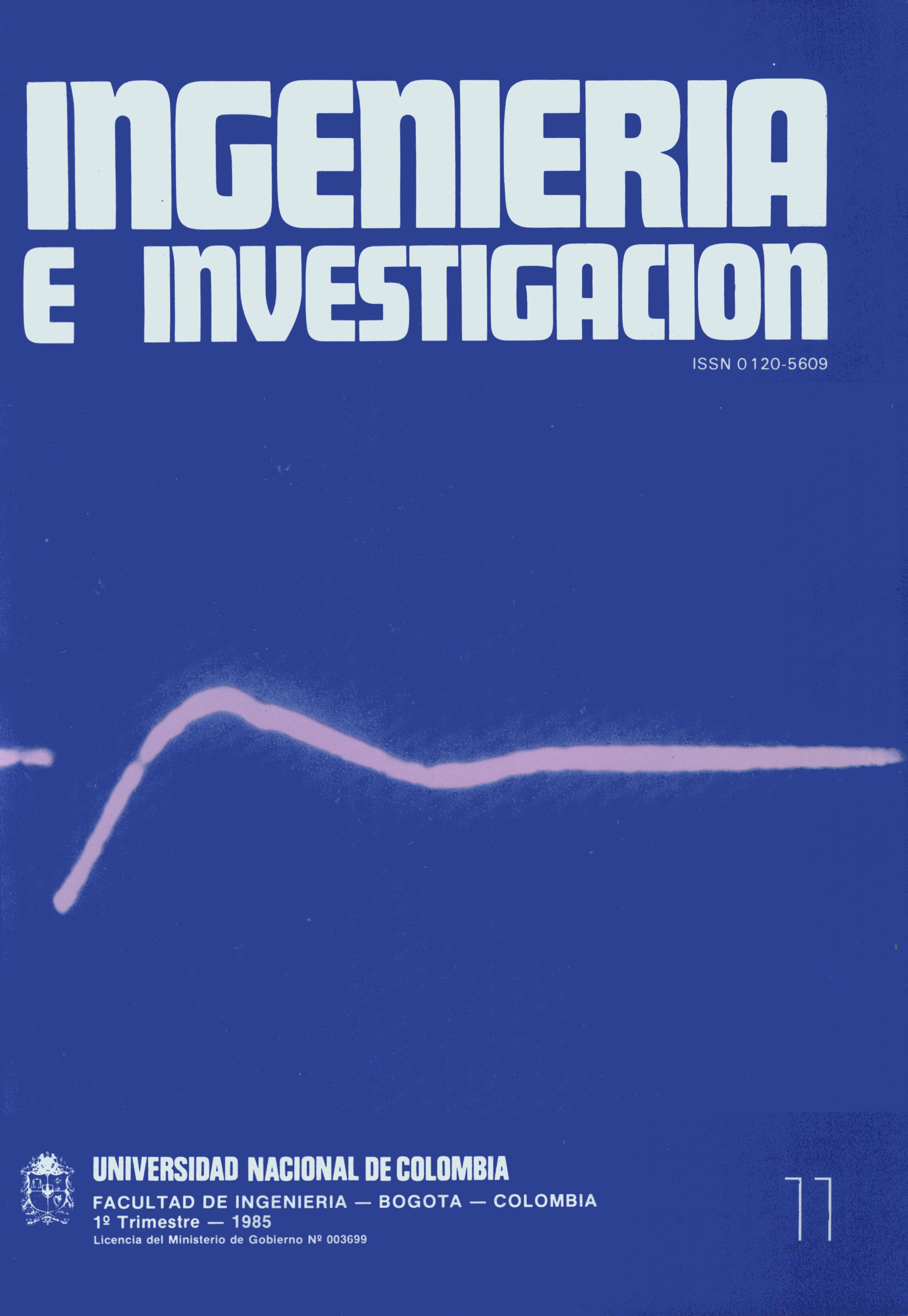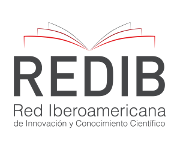Control de generación de la onda de choque y medición de sus tiempos característicos
DOI:
https://doi.org/10.15446/ing.investig.n11.19504Keywords:
Ondas de choque, Alta tensión, Medición electrónica, Osciloscopio, Trigatron, Generador de pulsos (es)Shock waves, High voltage, Electronic measurement, Oscilloscope, Pulse generator (en)
Downloads
La generación y medición de las ondas de choque, que simulan las sobretensiones de corta duración debidas básicamente a descargas atmosféricas, son fundamentales para comprobar experimentalmente el cumplimiento de los requisitos de control de calidad que exigen las normas de fabricación del equipo eléctrico.
En el presente artículo, se tratan estos dos aspectos —generación y medida— mediante el desarrollo de un generador de pulsos para sincronizar el osciloscopio con la producción de la onda de choque y la construcción de un sistema de medida consistente en un divisor resistivo, impedancias de acople y la cabina apantallada para aislar el osciloscopio de las interferencias electromagnéticas.
Las construcciones se realizaron en los laboratorios de metalurgia y mecánica del IEI (Instituto de Ensayos e Investigaciones) y en los laboratorios de física de la Universidad Nacional, siendo los primeros desarrollos en el campo de mediciones de alta tensión que adelanta el grupo de investigación en alta tensión GIAT del Departamento de Ingeniería Eléctrica de la Universidad Nacional.
References
Melo. R.; Ponce, C; Triviño, N. “Generador y medida de tensiones de impulso y construcción de un generador de pulsos para encendido y corte de la onda de choque principal”. Proyecto de Grado. Universidad Nacional, 1984.
Roth, Arnold. “Teoría de la alta tensión”. Editorial Labor S.A., Barcelona. Madrid, Buenos Aires. Rio de Janeiro. México, Montevideo. 1966. Pág. 526-527.
IEEI “IEEE Standard Techniques for High-voltage Testing”. ANSI/IEEE STD. 4-1978. Power System Instrumentation and Measurements Committee of IEEE Power Engineering Society. 1978
International Electrotechnical Commission High Voltage Test Techniques. Publication 60. Part 2 — Test procedures. Ginebra. Suiza, 1973.
IEEE. “IEEE Guide for Transformer Impulse Test”. IEEE No. 93-657-98. The Institute of electrical and Electronics Engineers. New York, 1968.
Henríquez H., Gilberto. “Técnica de las altas tensiones”. Volumen II. Editorial Limusa, México, 1976.
Ianovici, M. “Measurements in HV Systems”. Universidad del Valle. Cali. Abril de 1983.
Kuffel, E. and Abdullah, M. “High-voltage Engineering”. Pergamon Press Ltd., 1970.
Kind, Dieter. “Introducción a la técnica de ensayos de alta tensión”. ISBN 3-5281-3805X. Mit 181 Bildern, Frierdr. Vieweg & Sohn Braunschweig/Wiesbaden, Germany West. 1972-1978. Título en alemán: “Einfuerung in die Hochspannungsversuchsnik”.
Schwab, Adolf J. “High-voltage Measurement Techniques”. The M.I.T. Press. 1972.
British Power Engineering. “Triggering Spark Gap”. London. July, 1960.
How to Cite
APA
ACM
ACS
ABNT
Chicago
Harvard
IEEE
MLA
Turabian
Vancouver
Download Citation
CrossRef Cited-by
1. Francisco Román Campos. (1986). Prácticas de alta tensión para fines didácticos en ingeniería. Ingeniería e Investigación, (13 A), p.45. https://doi.org/10.15446/ing.investig.n13A.19543.
2. Francisco José Román Campos. (2010). The Electromagnetic Compatibility Research Group: research questions. Ingeniería e Investigación, 30(2), p.208. https://doi.org/10.15446/ing.investig.v30n2.15751.
Dimensions
PlumX
Article abstract page views
Downloads
License
Copyright (c) 1985 Francisco Román Campos, Rafael Melo, Crisanto Ponce, Nelson Triviño

This work is licensed under a Creative Commons Attribution 4.0 International License.
The authors or holders of the copyright for each article hereby confer exclusive, limited and free authorization on the Universidad Nacional de Colombia's journal Ingeniería e Investigación concerning the aforementioned article which, once it has been evaluated and approved, will be submitted for publication, in line with the following items:
1. The version which has been corrected according to the evaluators' suggestions will be remitted and it will be made clear whether the aforementioned article is an unedited document regarding which the rights to be authorized are held and total responsibility will be assumed by the authors for the content of the work being submitted to Ingeniería e Investigación, the Universidad Nacional de Colombia and third-parties;
2. The authorization conferred on the journal will come into force from the date on which it is included in the respective volume and issue of Ingeniería e Investigación in the Open Journal Systems and on the journal's main page (https://revistas.unal.edu.co/index.php/ingeinv), as well as in different databases and indices in which the publication is indexed;
3. The authors authorize the Universidad Nacional de Colombia's journal Ingeniería e Investigación to publish the document in whatever required format (printed, digital, electronic or whatsoever known or yet to be discovered form) and authorize Ingeniería e Investigación to include the work in any indices and/or search engines deemed necessary for promoting its diffusion;
4. The authors accept that such authorization is given free of charge and they, therefore, waive any right to receive remuneration from the publication, distribution, public communication and any use whatsoever referred to in the terms of this authorization.




























